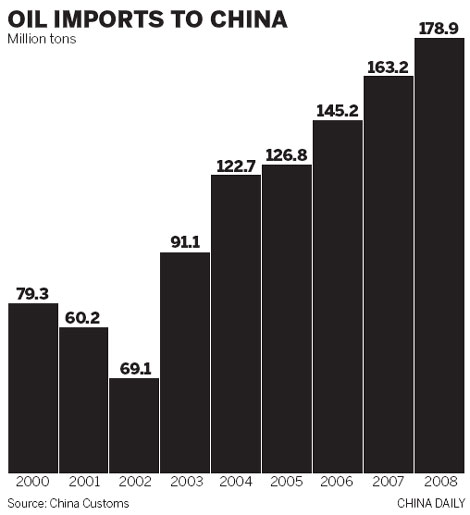Energy
China steps on the gas for energy
Updated: 2011-01-20 11:22
By Wang Qian (China Daily)
BEIJING - China will spend an average of 500 million yuan ($74.6 million) each year on exploring oil and gas resources over the next two decades to counter the country's growing dependence on imported energy.
"Starting in 2011, the annual investment in detecting and exploring oil and gas will reach 500 million yuan, including 200 million for exploring energy resources on land, while the rest will be offshore," Zhong Ziran, deputy director of the China Geological Survey (CGS), which is affiliated to the Ministry of Land and Resources, said at a conference in Beijing on Wednesday.
The country previously invested an annual average of 50 million yuan on locating land energy resources from 1999 to 2010, according to data from the CGS.
Energy experts have estimated that 60 percent of China's oil consumption will be imported by 2020, while the country's foreign oil dependence ratio reached a new high of 55 percent in 2010.
Zhong said the CGS will intensify its efforts to detect potential energy resources to promote the commercial exploration of oil and gas.
As the current supply of energy is unable to meet the surging demand, a breakthrough needs to be made in energy detection and exploration to maintain the country's sustainable development, Chen Renyi, director of the CGS's department of mineral resources assessment, told China Daily on Wednesday.
"The key objective of our current work is to detect new promising areas that contain oil and gas to ease our surging demand for energy," Chen said.
Since 1999, the CGS has located four promising oil and gas fields on land across China and 38 prospective oil basins beneath the sea and in the ocean.
As most of the oil basins beneath the sea are difficult to explore, they can be viewed as the country's strategic oil reserve, Chen said.
| ||||
The country's 12th Five-Year Plan (2011-2015) has proposed introducing a marine development strategy that operates with improved technical capabilities under comprehensive management.
Natural gas hydrates, another potential energy resource, have been found in the permanently frozen subsoil south of Qilian Mountain in the northwestern province of Qinghai. Following the United States and Canada, which made their own discoveries in 2009, China has become the third country to make such a find.
While great achievements have been made, the current level of investment in energy detection remains insufficient, Chen said, adding that the government's 500 million yuan investment is actually quite small compared to the 30 billion yuan that is annually invested by domestic oil and gas companies.
"But as energy detection receives greater attention from the government, more large oil and gas fields are bound to be discovered, making the big breakthrough that is needed in our energy supply," he said.
China aims to more than double its annual natural gas output to 160 billion cubic meters by 2015 and produce 6 billion tons of oil over the next three decades, or 200 million tons a year, the Ministry of Land and Resources said in 2009.

Specials

President Hu visits the US
President Hu Jintao is on a state visit to the US from Jan 18 to 21.

Ancient life
The discovery of the fossile of a female pterosaur nicknamed as Mrs T and her un-laid egg are shedding new light on ancient mysteries.

Economic Figures
China's GDP growth jumped 10.3 percent year-on-year in 2010, boosted by a faster-than-expected 9.8 percent expansion in the fourth quarter.


